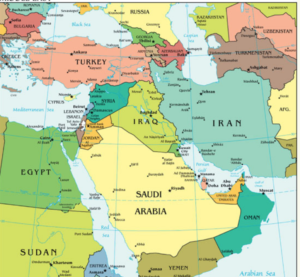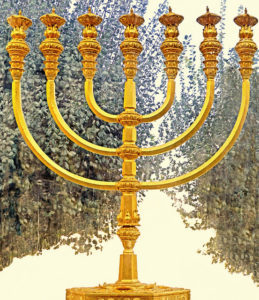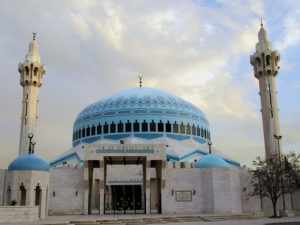xxx
 A good number of people may be aware of certain major issues influencing the rapidly escalating tensions between the Middle East and the West — lingering Islamic resentment about the Crusades (11th -14th century CE) as well as Allied actions at the close of WWI, the open rejection of moral values in the secular West, and oil. But one additional element should not be ignored.
A good number of people may be aware of certain major issues influencing the rapidly escalating tensions between the Middle East and the West — lingering Islamic resentment about the Crusades (11th -14th century CE) as well as Allied actions at the close of WWI, the open rejection of moral values in the secular West, and oil. But one additional element should not be ignored.
It fuels the more radical adherents and will increasingly impact decisions in Israel, the rest of the Middle East, and Europe.
Non-Muslim Westerners are familiar with the Christian attitude about the times we live in but less so about the outlook of Judaism and Islam.
End Time Views
The Sunni Muslim Religion of Islam website acknowledges that Islam, Christianity, and Judaism, share some beliefs in common about the end time but points out that each differs significantly in some of the details.
These are the similarities.
- The one thing the three generally agree about is the belief in a Messiah appearing at that end, according to the website.
- A considerable number in each religion believe mankind is close to the end of something — be it this age or, as others think, literally the end of the world.
- Islam, like the others, feels ‘true believers’ have their part in preparing the way for the Messiah.
Here are the differences.
Judiasm
 Some religious Jews, strongly believe that part of that preparation involves reinstitution of sacrifices and re-creating a central place of worship to welcome the coming Messiah.
Some religious Jews, strongly believe that part of that preparation involves reinstitution of sacrifices and re-creating a central place of worship to welcome the coming Messiah.
In Israel, the Temple Institute and Temple Faithful are highly dedicated to the goal of a new temple. Initially they were considered fringe groups, but their supporters in Judaism and segments of Christianity have been increasing.
The interior furnishings and the priest’s clothes are ready. A school for training priests is also said to be in operation. But not being allowed open access to the Temple Mount has stopped them from offering sacrifices or putting up a tent much less building a third Temple there.
But something even greater is holding them back. It is the need for ashes from a qualified red heifer. The ashes are required to purify the altar to be used for sacrifices. The female cow must be at least two years old, some say three, and meet other exacting criteria before it can be used this way.
Since the 90s, several potential red heifers have been discovered but were disqualified before reaching the age deemed proper. In early 2014, another one was born and must be monitored, at least, for another 16 to 24 months before a decision can be made.
Islam
 The majority of Muslims are Sunni. Some estimate 80% and others as high as 95%. Those who recently declared the Islamic State are Sunni.
The majority of Muslims are Sunni. Some estimate 80% and others as high as 95%. Those who recently declared the Islamic State are Sunni.
The next largest group is Shite (or Shia), said by some to be 8%, with other offshoots making up the remainder. And Shite has more than one branch.
The Sunni Religion of Islam website, states the Shites incorporated the beliefs of other religions and says,
“This was due mainly to the fact that this ideology was mainly espoused by people in areas far from the centers of Islamic learning, namely Persia”
The website adds,
“… Thus the Shiites became fertile soil to the introduction of foreign ideas … resulting in a sect composed of ideas stemming from Judaism, Zoroastrianism and Islam.”
All Muslims who are not Sunni, the Sunni site posted, are members of “deviant sects”.
Shiites (also called Shias) believe in a Messiah and the need to pave the way for him. The exact details of who he is may vary depending on the Shiite branch.
The former head of Iran (current name for Persia), President Mahmoud Ahmadinejad, is Shiite as well as most of Iran’s other citizens.
Many Shites, like Ahmadinejad, look for a 12th top Imam. Generally speaking, an Imam is a religious leader. According to NBC news in September 2009, Ahmadinejad said,
“He will come so that there is no more war. No more enmity, hatred. … Of course, he will return with Jesus Christ.”
In addition to Iran, the adherence.com website shows Iraq, Bahrain, and Azerbaijan as predominately Shiite. Significant Shite communities exist in other Middle Eastern countries and in part of Indonesia. As with other religious bodies, its members are also scattered in other nations. Nevertheless, the Shiites are a small group in comparison to Sunnis.
The Religion of Islam Sunni website says Sunnis, like Christians, believe Jesus is the Messiah. They too believe he will return.
It adds, unlike mainstream Christianity, the Sunnis reject the idea he is part of a Trinity. They also do not believe he is God or ever died.
Conflict-ing Beliefs
Islam’s religious leaders, like leaders of a significant part of Judaism and Christianity, preach that the world needs to turn now to their concept of God and His way.
That is a reason why we see Sunni groups like the al Qaeda, ISIS, Hamas, Muslim Brotherhood, and Taliban, as well as Hezbollah (Shite), plus more Muslims in general getting behind the idea of an Islamic State, in 2014, and eventually a global Muslim world.
But because others have a different, yet an equally strong, notion of what the world should be, once again battles are being fought in the name of religion. This is happening in parts of Africa and the Middle East. And such conflicts can be expected to continue.
Photo Credits: Map Courtesy of CIA; Menorah by Dennis Jarvis, License: CC BY-SA 2.0; Abdullah I Mosque by David Stanley, License: CC BY 2.0